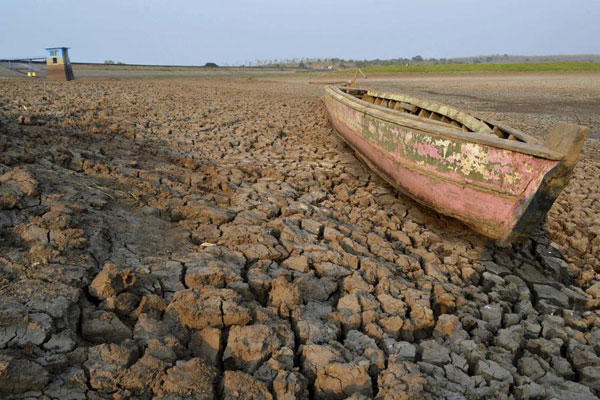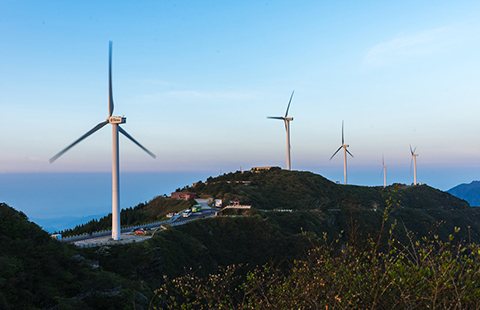
 |
|
A wooden boat is seen stranded on the dry cracked riverbed of the Dawuhan Dam during drought season in Madiun, Indonesia, October 5, 2015. Crop failures caused by an El Nino drought presage more pain for Southeast Asia's largest economy. [Photo/Agencies] |
GENEVA - This year will be the hottest on record and 2016 could be even hotter due to the El Nino weather pattern, the World Meteorological Organization said on Wednesday, warning that inaction on climate change could see global average temperatures rise by 6 degrees Celsius or more.
WMO director-general Michel Jarraud said it was still possible for a global climate summit starting in Paris on Monday to agree steps to could keep the rise within 2C (3.6 Fahrenheit) over pre-industrial times, a target set down in 2010 to try to prevent a dramatic increase in extreme weather.
"But the more we wait for action, the more difficult it will be," he told a news conference.
"You have scenarios assuming very strong decisions, very quick and sharp reduction of greenhouse gases, and you have other scenarios with business as usual, where you end up with predictions of additional warming of 5, 6 degrees, maybe even more. That will very much depend on the decisions (in Paris)."
Jarraud said there was no "silver bullet" to stop climate change. As well as a strong deal in Paris, it needed citizens to choose public transport over cars and insulate their homes, and industry to tackle sources of greenhouse gas emissions such as power stations, transport, cement, farming and fertilisers.
Jarraud rejected climate sceptics' arguments that the science underlying predictions of man-made climate change was flawed.
"It's not about believing or not," he said. "It's a matter of seeing the facts. The facts are there."
Paul Williams, climate scientist at the University of Reading, agreed: "All the thermometer readings, satellite observations, tree rings, ice cores and sea-level records would have to be wrong."
"SIGNIFICANT MILESTONE"
Global average surface temperatures in 2015 are likely to reach what the WMO called the "symbolic and significant milestone" of 1.0C above the pre-industrial 1880-1899 era, and around 0.73C above the 1961-1990 average.
Jarraud said 16-20 percent of the 2015 rise may be due to El Nino, a natural weather pattern marked by warming sea-surface temperatures in the Pacific Ocean. The current El Nino is one of the strongest on record.
But five-year averages showed temperatures were rising regardless of El Nino or its cooling counterpart La Nina, with eight of the 10 warmest years occurring since 2005.
The years 2011-2015 have been the hottest five-year period on record, with temperatures about 0.57C (1.01F) above the 1961-1990 reference period.
"This is all bad news for the planet," Jarraud said.
Global ocean temperatures were unprecedented during the period, and several land areas, including the continental United States, Australia, Europe, South America and Russia, broke temperature records by large margins.
Next year may be even warmer; levels of greenhouse gases in the atmosphere have risen to a new record every year for the past 30 years, and El Nino is likely to continue into 2016.
"The year whose annual mean temperature is likely to be most strongly influenced by the current El Nino is 2016 rather than 2015," the WMO said.








